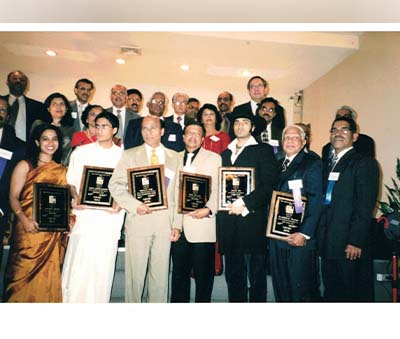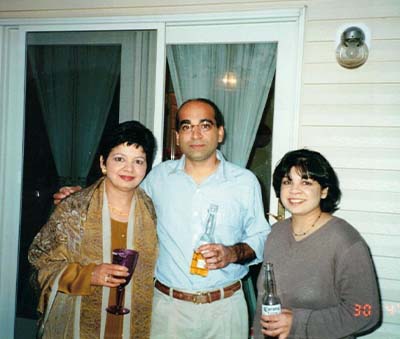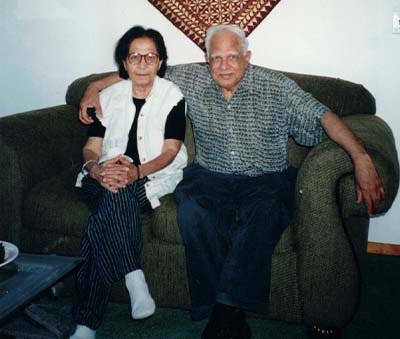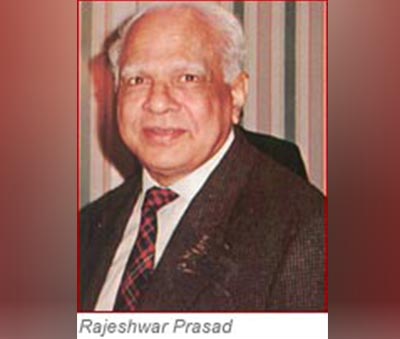Born on March 1,1932 in a small village, Chhainsa, in Haryana Province (formerly Punjab), I completed my primary education, I moved to Delhi in 1941 for higher education. I stayed with my uncle, aunt and their two children, in Old Delhi. Went to Hira Lal Jain Higher Secondary School. My expenses of education and living etc. were borne by my father as my uncle, the only bread winner, was a mill laborer and he could not afford extra expenses. After high school in 1948. I moved to another place in Delhi where I was joined by my elder brother Brahameshwar Dayal (BD) who had just completed his high school and was not interested in higher education.
He had lost two years because of an accident and stayed home. We lived in one room, next to Hindu College, with no facilities. We used public rest rooms, public hydrant, basically, using that room (12×15 square feet) as kitchen, living room, bedroom and everything. After one year, we pleaded to our parents that we would like to move to a better place. We moved to an independent 2-bedroom section in a house on the same street where I had lived with my uncle during my high school. My mother joined us in that house.
 I completed my Honors and Master’s in Economics from Delhi University. Our eldest brother, Rameshwar Dayal, (RD) completed his B.Com. from Uttar Pradesh and joined us. To cut it short, my eldest brother got married, my mother moved back to the village. BD got a job in Defense Ministry and move, to Uttar Pradesh and then to Chandigarh and permanently settled there. I also got married and decided to move to another place. All these movements were for convenience and out of necessity. We were a very cohesive family.
I completed my Honors and Master’s in Economics from Delhi University. Our eldest brother, Rameshwar Dayal, (RD) completed his B.Com. from Uttar Pradesh and joined us. To cut it short, my eldest brother got married, my mother moved back to the village. BD got a job in Defense Ministry and move, to Uttar Pradesh and then to Chandigarh and permanently settled there. I also got married and decided to move to another place. All these movements were for convenience and out of necessity. We were a very cohesive family.
I got a part time job at the Delhi School of Economics which was doing a social-economic survey of Greater Delhi. It gave me an opportunity of contacting about 500 families. The questionnaire was very detailed and had about 100 questions and sub-questions. It normally took an hour to fill it out. Many a time I had to make two trips to fill out the questionnaire. I came across all kinds of people, people living in huts, government quarters, and gazetted officers (such as IAS) . It gave me an opportunity to see almost all different parts of Delhi. I did it for about two years till 1956. I was paid on the number of successful contacts I made half a dollar per questionnaire (one dollar was equal to five rupees).
Then Delhi School of Economics, Delhi University, got in contact with a Social Welfare Agency called Bharat Sewak Samaj (BSS) of Delhi province to conduct a survey of slums of Old Delhi. I was hired to take responsibility of the field work. Eighteen field workers were hired, and I was given the supervisory responsibility. The survey was financially supported by Prime Minister’s Relief Fund. We hired 18 field investigators to conduct the survey. After the survey was completed, it was published in a book: SLUMS OF OLD DELHI, published by Atma Ram a& Sons.
 In 1955. the Ford Foundation provided financial support to start a pilot project in Urban Community Development (UCD). It was headed by Mr. Chatterjee, as Director, who had been in touch with Ford Foundation Consultant, Dr. Marshall Clinard. UCD worked in collaboration with BSS, Mr. Chatterjee asked Mr. Brij Krishan Chandiwala, BSS Convener, that he would like to hire me as a Research Associate. And he asked his opinion also about my work ethics etc. The offices of UCD and BSS were just a block apart in New Delhi.
In 1955. the Ford Foundation provided financial support to start a pilot project in Urban Community Development (UCD). It was headed by Mr. Chatterjee, as Director, who had been in touch with Ford Foundation Consultant, Dr. Marshall Clinard. UCD worked in collaboration with BSS, Mr. Chatterjee asked Mr. Brij Krishan Chandiwala, BSS Convener, that he would like to hire me as a Research Associate. And he asked his opinion also about my work ethics etc. The offices of UCD and BSS were just a block apart in New Delhi.
I joined UCD in 1956. My first task was to prepare profile of various communities in Delhi. By virtue of my experience with Delhi School of Economics and Bharat Sewak Samaj this was not new to me. I went back to some of the same communities and prepared profiles. The profile included the physical location, demographics, social, economic status of people living there, transportation etc. Mr. Chatterjee and Marshal Clinard selected six sites out of about 30 profiles.
Each selected area was different and that provided a very diversified group for the pilot project. UCD hired 12 professional staff persons for these six places (6 men and 6 women). Minimum education of each one was to be Master or equivalent in Social Work. The second UCD pilot project was started in Ahmedabad, Gujarat. I was asked to spend about a week there to get the staff oriented to the UCD concept.
 Since the UCD office was in Connaught Place, almost all those who worked for the survey of slums of Delhi remained in touch with one another. During evening they all (about ten) used to meet in Cannaught Place and sit on the lawn as we had no office. I was always there and led the group. We always thought of doing something productive as all of us were fully employed.
Since the UCD office was in Connaught Place, almost all those who worked for the survey of slums of Delhi remained in touch with one another. During evening they all (about ten) used to meet in Cannaught Place and sit on the lawn as we had no office. I was always there and led the group. We always thought of doing something productive as all of us were fully employed.
One day, a person, named Major Ramchandran asked me to see him. I did not know him at all, but he was a key person in the Central (National) Bharat Sewak Samaj, located in the same barracks. He lived a very simple life. Later on, I learnt that he had played a pivotal role during the partition of India and settlement of refugees. Next Day I met him in July,1968. He told me that he would like to send me to Paris, France.
That was the most surprising news I had ever heard. He explained that there is an International Institute in Paris which gets people from developing and underdeveloped countries, and that he sends one professional from India every year to that Institute. Name of the Institute is IRFED. I did not know how to respond. He further said that he had seen me many times sitting on the grass with large group and noticed that I had always been playing a leading role in that group. He gave me about a week to respond. I did not know where to start.
I had a good job in Delhi and how can I leave my wife and two children behind. Youngest one, Mini, was not born at that time; she was born in January 1969.). I talked to my family and one or two friends, and they all encouraged me not to miss this opportunity. My parents-in-law were also encouraging, and they told me not to worry about the family. Finally, I told Major Ramchandran that I was ready. I arranged two year leave from my office. Later on I extended my leave without pay for one more year
For four months I learnt French which was not helpful at all when I landed in Paris. The French school was also located in the same barracks. By virtue of my contacts with BSS it was easy for me to go through passport, Visa process without any problem. as one of the volunteers who used to come to BSS regularly, was Principal Secretary to one Union Minister (names not identified). He helped me to complete all these formalities without me even going to French Embassy. After I left for Paris, almost for one year my office paid my salary to my wife.
I left for France on October 15, 1968, with 40 francs in my pocket. I called the Institute from the Paris airport and was advised to take a taxi. The taxi cost me 37 francs, and I entered the Institute with 3 francs in my pocket. The Secretary there said. “You are 15 days late, but I will give you full month scholarship of 500 francs.” She also helped me to settle down. I met one person (French) in the Institute who had gone on the same program to India under which I came from India. We became instant friends and he helped me a lot.
My French was no good and I realized I have to learn French conversation classes. Within two weeks I enrolled myself to learn French conversation at night for five days a week. It helped me but still I was unable to understand lectures. Besides the class I had to undertake an individual project as well as a group (5 students) project. In both, I did exceedingly well (almost A+). My individual project was Development of Chandigarh in India; and my group project was Impact of migration on Sending and Receiving Countries.
From Paris, encouraged by some Americans with whom I used to meet almost every day at the breakfast time, I decided to come to USA. I got admission in a school and got F1 visa. Prem Nagpal, a close family friend at that time was already in USA studying at Columbia University. She managed for my stay in a neighborhood settlement house on 70th Street, in Manhattan. She had talked to the President that I would be coming and if she could help in some way.
I met the President next day and she offered me a job: “You have to stay in your room over the weekend and if there is a telephone call, you receive it. There was only one telephone located just outside my room. For that your board and lodge would be free. This job gave me an opportunity to study also.
With the help of a professor who had come to India and visited me and Prem at Urban Community Development Office, I got admission in Columbia University and then in Hunter College I did my Master in Urban Planning with specialization in health planning. He helped me to have my tuition waived (though he never told me), The college placed me as an Intern at the New York State Health Planning Commission in Manhattan which paid me enough to stay comfortably and support my family in India. In October 1971 I got a job in Long Island and moved from Manhattan to Suffolk County where I had been hired by Regional Medical Program (RMP) in Centereach as a Planning Associate.
I commuted from Manhattan for about three months (October 71 to January 72) to Centereach. Lucky coincidence, the Administrative Assistant at RMP, used to drive every day to RMP from Manhattan. She was kind to help me commute with her. Then I rented a house in Centereach, and my family joined me on January 15, 1972. The RMP helped me and my family to get green card, with the help of an attorney. In 1974, I was selected as Executive Director of RMP when the former executive director (Dr. Glen Hastings) and the Associate Director (Harrison Owen) moved to Florida Medical School, and the Veterans Administration in Washington DC respectively.
There were 70 candidates for the position of Executive Director from all over the country. Dr. Lawrence Sherr, Chief of Medicine at North Shore University Hospital, was the chairman of the Search Committee. He was also the Chair of the Board of Directors of Regional Medical Program. There were 53 RMPs in the United States all funded by the Federal Government through HEW.(Heath, Education and Welfare Department)..
With the political changes in Washington, the RMPs discontinued all over the Country. With the closure of the RMP I tool sometime to explore various options. I knew very well that I will have no difficulty in finding a job. However, I also felt that being head of an agency funded by Federal Government there are so many strings attached. Finally, I changed my career 180 degrees and bought an Indian Retail Store in Port Jefferson, NY on the harbor of Long Island Sound. its name was ADCO, but I changed it to ADCO Fashion Boutique and besides imports of Indian clothes I added from Indonesia and other countries.
Then I took it to a higher level and got high fashion dresses from a prestigious wholesaler in California, those dresses were sold for about $600.00 each whereas Indian dresses sold for $50.00 or so. After running the international boutique for about 15 years, I decided to retire. I closed the business; and I donated all my merchandise to Charity organizations, including Theatre Three in Port Jefferson. During my working period I was very much involved with The United Way of Long Island for about fifteen years as well as with the Suffolk County Human Rights Commission also for about 15 years (both voluntary positions). My work was commended very much by both these organizations. In March,1975 my wife passed away of leukemia and that was the toughest time as my youngest daughter was only six years. Luckily, our neighbors were so kind, particularly one family across our house.
Their older daughter was the same age as Mini’s and they became good friends. It was still tough, and my mother-in-law wrote to Prem Nagpal if she can get married to me. It was not easy for her as she had led an independent life for about 47 years. All my children knew her very well; and she used to visit us in Long Island most of the weekends, as she lived in Manhattan and worked also there ai the Harlem Medical Center as Social Work Supervisor, Finally, we got married in late 1975. She got into poetry and paintings as her hobby. Her one poem was selected by World Poetry Society in California and requested her to come and read it in CA. we both went there and m it was some event we had never seen. There were film stars and many distinguished people.
 Around 2004-05, my wife was suspected to have Alzheimer’s which was later ruled out. However, she started signs of weakness, forgetfulness and it was not possible to leave her home alone. With the help from various agencies in home care and other areas we were able to carry on for about five years or so. My wife and I knew about Shantiniketan (SN) in Tavares, Florida. Around the same time My oldest daughter Monica and her husband, Madan Gupta, were in Orlando related to their business. On my request they visited SN.
Around 2004-05, my wife was suspected to have Alzheimer’s which was later ruled out. However, she started signs of weakness, forgetfulness and it was not possible to leave her home alone. With the help from various agencies in home care and other areas we were able to carry on for about five years or so. My wife and I knew about Shantiniketan (SN) in Tavares, Florida. Around the same time My oldest daughter Monica and her husband, Madan Gupta, were in Orlando related to their business. On my request they visited SN.
They advised us to move to SN. It was not an easy decision after living in Long Island for about 50 years. We visited SN three times before we moved in 2014 permanently. I was indirectly involved with the concept of SN by virtue of my voluntary work with the National Indio-American Association for Senior Citizens Inc. (NIAASC) initiated in 1998.This new organization was set up as a nonprofit 501C3 entity with a limited objective to help Indian American Seniors through information, referral and advocacy. Its office is at the Indian American Kerala Cultural and Civic Center in Elmont, New York. NIAASC has been able to expand considerably.
I was the founder president and currently Chairman of NIAASC. NIAASC is headed by Ms. Gunjan Rastogi, a very energetic, talented and committed community leader. She has been its President since January 2021. NIAASC operates through a Board pf Directors and its mission is limited to serve Indian American seniors through information, referral and advocacy services.
